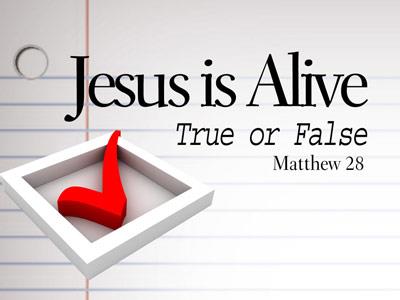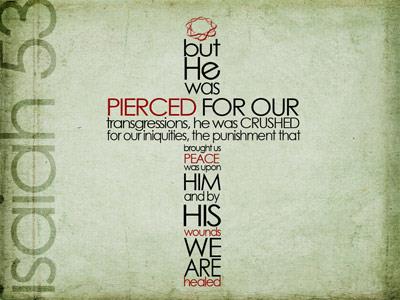-
The Lost Tomb Of Jesus???
Contributed by Paul Wallace on Nov 28, 2017 (message contributor)
Summary: This is a apologetic response to the March 4, 2007 Discovery Channel documentary on "The Lost Tomb of Jesus."
THE LOST TOMB of JESUS???
Acts 1:1-4
1 In my former book, Theophilus, I wrote about all that Jesus began to do and to teach 2 until the day he was taken up to heaven, after giving instructions through the Holy Spirit to the apostles he had chosen. 3 After his suffering, he showed himself to these men and gave many convincing proofs that he was alive. He appeared to them over a period of forty days and spoke about the kingdom of God.
I think it was last Easter I said something about not being surprised if they say they have found the bones of Jesus in a grave. About a year later it has happened, and just like last year just in time for Easter. Last year it was the Gospel of Judas, the Gospel of Philip, The Jesus Papers, and the Da Vinci Code. I said God allows times when the “evidence” seems to contradict the Word of God to give us a choice to believe by faith or accept the evidence. Later it seems he will discredit the “so called evidence”. He wants us to believe his word above all else.
Jerusalem (CNSNews.com) - Claims in a new documentary that an ancient tomb discovered decades ago outside of Jerusalem contained the bones of Jesus and his family may be a great money-making gimmick - but scientifically, it is nonsense, according to leading archeologists and scholars in Jerusalem.
"The Lost Tomb of Jesus," due to air on the Discovery Channel on March 4, claims that a 2,000-year-old tomb containing 10 boxes of bones belonged to the family of Jesus of Nazareth. (Two millennia ago, the dead were left to decompose in a cave and their bones collected a year later and buried in bone boxes or ossuaries.)
The documentary claims that inscriptions on six of 10 ossuaries found in a single tomb indicate that there is a one in 600 chance that bones in the tomb were those of Jesus, Mary Magdalene and a son, along with other family members, a press release said.
According to the Bible, Jesus was God incarnate who was crucified, rose from the dead and ascended into heaven. He wasn’t married and never had any natural children. Mary Magdalene was a woman out of whom seven demons were exorcized and became a follower of Jesus.
Professor Amos Kloner of Bar Ilan University oversaw the original archeological dig 27 years ago. Kloner could not be contacted Tuesday, but comments published in the Jerusalem Post indicated that he dismissed the tale entirely.
"It makes a great story for a TV film," Kloner said. "But it’s completely impossible. It’s nonsense."
WHY DOES IT MATTER? The very fact that Jesus had an ossuary would contradict the Christian belief that he was resurrected and ascended to heaven
The Problems with the Lost Tomb of Jesus
1. It is not a new discovery. It was found 27 years ago in 1980.
William Dever, an expert on near eastern archaeology and anthropology, who has worked with Israeli archeologists for five decades, said specialists have known about the ossuaries for years.
"The fact that it’s been ignored tells you something," said Dever, professor emeritus at the University of Arizona. "It would be amusing if it didn’t mislead so many people.
2. The DNA evidence only proves they are not all blood relatives.
- It seems to mean two were married.
3. The names Jesus and Mary are common names in that time.
-Critics said all the names were commonplace in Biblical times
Hebrew University archeologist and epigraphist Leah DiSegni said that the names found in the tomb were among the most common names of the day.
It would be like finding a tomb with the name "George" on it in the future and people asserting that it must have been the tomb of President George Bush, DiSegni told Cybercast News Service.
Many women in that era were called Miriam (Hebrew for Mary), DiSegni said. That was why they added descriptive titles to their names, such as where they were from.
4. There is real problems translating them to Jesus and Mary.
Pfann is even unsure that the name "Jesus" on the caskets was read correctly. He thinks it’s more likely the name "Hanun." Ancient Semitic script is notoriously difficult to decipher.
Nor is there anything remarkable about finding bone boxes inscribed with the names of Yeshua, Miriam or Mary, the Christian clergy leader asserts. This is especially the case since Yeshua was "one of the most popular male names of that period," he adds, and "30 percent of women were named Mary at that time."
And Mariamene, which some scholars believe was Mary Magdalene’s original name, was "as popular as Jill or Sally is today in our culture," Schenck says. Speculating about the bone boxes depicted in The Lost Tomb of Jesus based simply on the names they bear, the minister contends, "is like finding [an artifact with the name] ’Bill Smith’ and saying, ’which Bill Smith is it?’ There’s just nothing here."

 Sermon Central
Sermon Central



